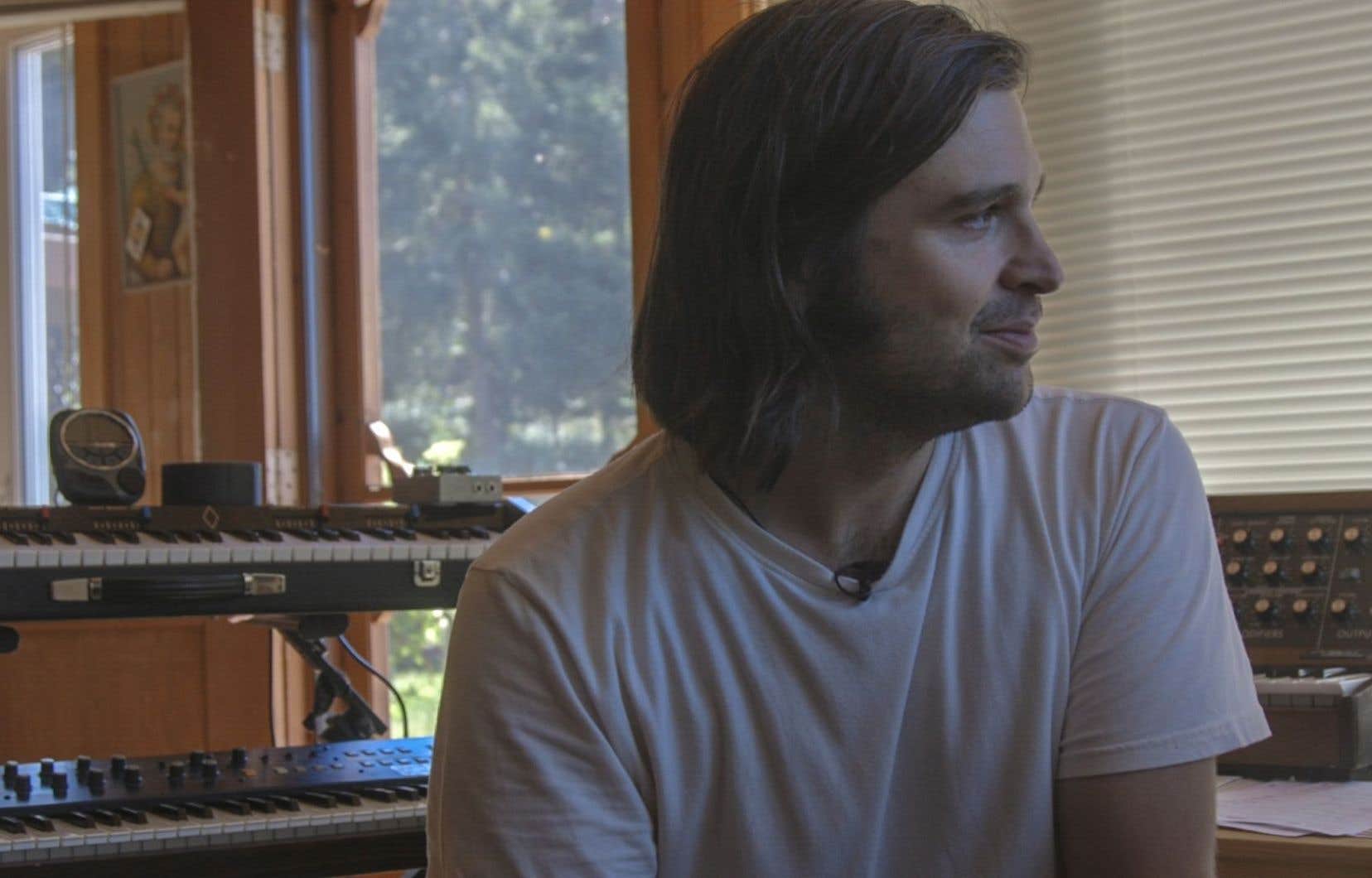This crackles almost as much in the career of musician Mathieu David Gagnon and his Flore Laurentienne project as in certain paintings by the great painter Jean Paul Riopelle. Not only has the artist just announced a record coming in the spring on his new label, Secret City, but he also has a concert scheduled at Bourgie Hall in March, which will be fueled by a residency held from March 28 November to December 2 at the Montreal Museum of Fine Arts (MMFA), during which he will be surrounded by works by Riopelle.
Mathieu David Gagnon, native of Sainte-Anne-des-Monts and resident of Kamouraska, is a calm and thoughtful person. But, on the phone, we have access to the composer and arranger’s “child in a candy store” version. “It’s really exceptional, I don’t think I’ll experience it twice in my life,” he said.
And we understand it. The musician managed to obtain the green light from the general director of the MMFA, Stéphane Aquin, to take up residence – almost in performance – in the Jean-Paul-Riopelle room of the institution. In addition, the two-time ADISQ award-winning instrumental musician was able to access the museum’s reserves and choose which works by the famous painter he would be surrounded by for his in situ creative exercise.
“I myself went to see each of the works in the reserves. Then I started by selecting a hundred because there were so many! explains Gagnon, who ultimately narrowed it down to around fifteen works. I really chose some nice stock, and things that have never been exhibited too. »
Among these are seven prints from the series Leaves (1967), and paintings such as Austria III And Crosswind. Mathieu David Gagnon also opted for an early work by Riopelle, “a small Canadian landscape with a wooden cabin that he painted while he was still studying”. This canvas, underlines the musician, will echo the large piece The pond – Homage to Gray Owl“which also represents a landscape with a wooden cabin, but in a much more modern style”.
Stéphane Aquin underlines that music has regularly had a place at the MMFA, if only in the themes. He remembers having set up in 2008, when he was curator, an exhibition on the place of music and dance in Andy Warhol’s work. More recently, the museum presented works by Jean-Michel Basquiat linked to music as well as productions by Nicolas Party accompanied by songs by Pierre Lapointe.
“But, to my knowledge, this is the first time that we have had an artist in residence in the museum galleries,” emphasizes Mr. Aquin, who was already a fan of Laurentian Flora. The general director believes that many works of art “are produced to a soundtrack, and that painters frequent musicians, for example. We know that the arts do not develop in a vacuum, therefore. So how can we restore its textural richness to art history? That’s a challenge for museums.”
The residence of Flore Laurentienne therefore fits into this context. During the five days planned, Mathieu David Gagnon will be accompanied by an ally, the versatile musician Antoine Létourneau-Berger, as well as numerous instruments, especially keyboards. Of the lot, we will see a rare Moog brand loaned by Laval University and which has become legendary in particular because it appears on the cover of the no less legendary record Switched-On Bach, by Wendy Carlos. “I would tell you that there will be almost as many collector’s instruments as collector’s paintings in the room. Just visually, it’s going to be really special,” explains the musician.
” A presence “
Mathieu David Gagnon already knew the painter of The tribute to Rosa Luxemburgbut it is by composing the music for the podcast Portraying Riopelle, produced by Radio-Canada, that he first created pieces linked to the work of the master of the brush and the trowel. This new approach for him led to the composition of new pieces, which will be found on an album to be released in the spring.
The residency, which is not linked to the organization of Riopelle’s centenary, will therefore allow Flore Laurentienne to reinvent the pieces already composed, to generate new avenues and to explore the effect of the works on her inspiration. And this, in the hope of nourishing the concert planned for March 23 at Bourgie Hall. “In the background [les Riopelle], it is a presence. There is so much energy in these works that sitting in front of it is as if you were in front of a wild audience,” says the musician, used to being stimulated by the St. Lawrence River.
“I think he made me see Riopelle in a fresh and new way,” confides Stéphane Aquin. In fact, it is not just based on a vague poetic impression, but it is really the compositional structure of the works which is reflected in its own musical composition structure. »
Mathieu David Gagnon agrees with the head of the MMFA. “Riopelle really worked with layers and that is very instinctive for me because I am an orchestrator, and orchestration, in music, also works in layers. »
He gives the example of one of the prints he chose, where we find superimposed leaves, a green color frame and scattered ink stains. “If we translate the randomness of ink into music, it gives white noise, which is made of all frequencies at the same intensity. And I translated the leaves—the nature, the organization—with a tonal melody. The more the piece progresses, the more the melody gains momentum and, therefore, harmony is born from chaos. It’s a way of translating what I see. »
